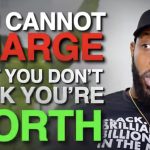Many people stay in harmful relationships believing they’re motivated by love, when in reality, they’re caught in a trauma bond. I’ve seen this pattern repeatedly in my work with clients seeking to heal from toxic relationships. What appears as devotion is often a psychological attachment formed through cycles of abuse and reconciliation.
Trauma bonds create a powerful addiction. One minute your partner hurts you, the next they pull you close. Tears flow, apologies are made, promises sworn—and for a brief moment, everything feels safe again. But this isn’t love. It’s a dangerous cycle that keeps you trapped.
The pattern is insidious: pain followed by relief, distance followed by closeness. Your brain begins to associate the relief that comes after suffering with love itself. This neurological confusion makes trauma bonds one of the most difficult attachments to break.
Understanding the Cycle
The trauma bond loop operates through predictable phases:
- Tension building – You feel like you’re walking on eggshells
- Explosive incident – Emotional, verbal, or physical abuse occurs
- Reconciliation – Apologies, gifts, and promises of change
- Calm period – Things seem better temporarily
Each time this cycle completes, the bond strengthens. Your nervous system becomes conditioned to crave the biochemical high that follows the reconciliation phase. This creates a dependency that mimics addiction.
I’ve worked with countless individuals who insisted they stayed because of love. When we explored deeper, they recognized that what kept them there wasn’t love but the intermittent reinforcement of those “good moments.” These brief periods of relief became increasingly precious as they grew rarer.
The Neurochemical Trap
What makes trauma bonds so powerful is their effect on brain chemistry. During the abuse phase, stress hormones like cortisol flood your system. When reconciliation occurs, your brain releases dopamine and oxytocin—the same chemicals associated with love and bonding.
Over time, your nervous system becomes addicted to this biochemical roller coaster. You’re not staying because you love the person; you’re staying because your body craves the high after the hurt.
This explains why leaving becomes increasingly difficult. The longer you stay, the more your identity becomes entangled with the relationship. Many clients tell me they can barely remember who they were before the cycle began.
Breaking Free
Recognizing a trauma bond is the first step toward healing. If you notice these patterns in your relationship, consider:
- Seeking professional support from a trauma-informed therapist
- Creating distance to break the neurochemical dependency
- Rebuilding connections with friends and family who support your well-being
- Practicing self-compassion rather than shame for staying
- Establishing a safety plan if you decide to leave
Recovery takes time. The withdrawal from a trauma bond can feel overwhelming, leading many to return to harmful relationships. This isn’t weakness—it’s the power of neurological conditioning.
In my practice, I’ve found that understanding the science behind trauma bonds helps people separate their authentic feelings from their conditioned responses. When clients recognize that their attachment isn’t love but a physiological dependency, they can begin the journey toward genuine healing.
Reclaiming Your Identity
Perhaps the most devastating aspect of trauma bonds is how they erode your sense of self. The longer you remain caught in the cycle, the harder it becomes to remember who you were before it began.
Recovery isn’t just about leaving a harmful relationship—it’s about rediscovering yourself. This journey involves reconnecting with values, interests, and dreams that may have been set aside during the relationship.
I believe that everyone deserves relationships built on mutual respect, consistency, and genuine care. Real love doesn’t hurt you then comfort you. Real love doesn’t keep you in a cycle of pain and relief. When you finally break free from a trauma bond, you create space for authentic connections that nurture rather than deplete you.
If you recognize these patterns in your own life, please know that healing is possible. The path forward begins with naming what’s happening and understanding that what feels like love may actually be keeping you trapped in pain.
Frequently Asked Questions
Q: How can I tell if I’m in a trauma bond or just a relationship going through difficulties?
Healthy relationships have disagreements, but they don’t follow the cycle of harm and reconciliation that characterizes trauma bonds. In a trauma bond, you’ll notice a pattern of tension, explosion, apology, and temporary calm that repeats. You’ll also feel anxious when things are good, waiting for the next problem. Most importantly, your sense of self-worth becomes tied to the relationship’s ups and downs.
Q: Why do trauma bonds feel so much like love?
Trauma bonds trigger the same neurochemicals as love—dopamine and oxytocin—especially during reconciliation phases. This creates confusion because your body experiences similar sensations to falling in love. The intermittent reinforcement (occasional good moments amid bad ones) creates a powerful attachment that can feel more intense than consistent, healthy relationships.
Q: How long does it take to recover from a trauma bond?
Recovery varies greatly depending on the duration and intensity of the relationship, your support system, and whether you’re working with a professional. Many people experience withdrawal symptoms for weeks or months after ending the relationship. Complete healing—including rebuilding your identity and establishing healthy relationship patterns—often takes a year or longer. Be patient with yourself during this process.
Q: Can the person creating the trauma bond change?
While change is possible, it typically requires the person to acknowledge their harmful behavior, commit to intensive therapy, and maintain consistent effort over time. Unfortunately, the cycle of abuse and reconciliation often includes promises to change that aren’t fulfilled. It’s important to base your decisions on consistent behavior patterns rather than promises or temporary improvements.
Q: Can trauma bonds form in relationships other than romantic ones?
Absolutely. Trauma bonds can form in any relationship with a power imbalance and intermittent reinforcement—including parent-child relationships, friendships, work relationships, and even between religious leaders and followers. The underlying mechanism is the same: cycles of harm followed by relief that create a powerful attachment despite ongoing damage to your wellbeing.






